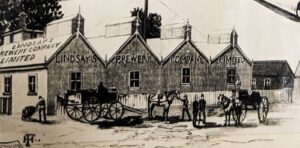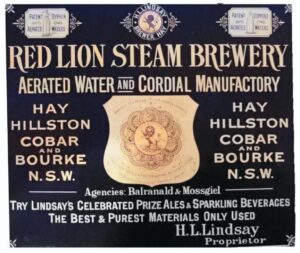The materials for the building were transported up the river by the Steamer Cumberoona, a testament to the logistical challenges of the time. The tale of this brewery is a captivating one, marked by success, innovation, and ultimately, tragedy.
Mr. Lindsay was no ordinary brewer. He had a reputation that preceded him, and he once confidently stated that the water available at Bourke was unparalleled for brewing. His vision was transformative – he foresaw a future where locally brewed beer would replace the consumption of large quantities of harmful spirits. The people of Bourke had every reason to celebrate Mr. Lindsay’s decision to open a branch establishment.
The brewery, along with the aerated water and cordial factory, occupied a prime location on Mitchell Street, on the banks of the Darling River. The brewery was renowned for the superior quality of its beer. The building housed a large cellar, measuring 100 feet by 25 feet, used for the cool storage of beer kegs. The water for brewing was sourced from two wells, one of which was 60 feet deep, while water for cask washing and steaming was drawn from the river.
The aerated water and cordial factory was equipped with state-of-the-art facilities for bottling, washing, and filling. The works were fitted with an extensive range of machinery, including four self-syruping machines and one double-action soda machine. This setup enabled the production of up to 1000 dozen bottles of aerated water in a single day.
The firm’s excellence was recognised at various exhibitions. They won the first prize for ales and porters at the Melbourne International Exhibition in 1881. Their ginger ale was awarded the first prize, competing against entries from around the world. They also secured ten additional prizes for their various cordials and aerated waters.
However, the 1890s brought a series of misfortunes for Henry Lindsay. Reports suggest that the company went into liquidation, forcing Lindsay to sell his interests to other brewing companies. His personal life was in turmoil, and he left Hay, NSW, to take up a position as a brewer at the Metropolitan Brewery in Melbourne. His wife did not accompany him and was reportedly seeking financial support from him. Tragically, Lindsay’s life ended in 1895 when he accidentally fell into a vat of beer and drowned.
The brewery continued operations until 1901 when the devastating Federation drought led to the closure of many businesses in Bourke, including the brewery. The drought forced many workers and their families to leave town in search of work in more prosperous areas, causing the brewery’s market to collapse.
In 1910, the brewery building and all its contents, including machinery, fittings, and the boiler, were sold at auction. The history of the building after its sale and its eventual demolition remains a mystery, lost in the sands of time. This is the intriguing and poignant story of the Red Lion Brewery.
A sad story of interest is the fate of the “Red Lion Brewery” sign which was given to the Bourke Historical Society by Ted Harrod. In 1965 the Society allowed the publican of the Federal Hotel to hang the sign (on their behalf) in his bar for historical interest to patrons. Unfortunately, when the publican left town after some years he took the sign with him. There is a mention in Bourke History Volumes of someone seeing the sign at an auction some years later, and it being bought by a private collector. Its location is now unknown!

The Pubs & Breweries of Bourke
From its earliest days Bourke has always had a reputation as a drinking town and it’s no wonder as it was, in fact, founded by publicans!



